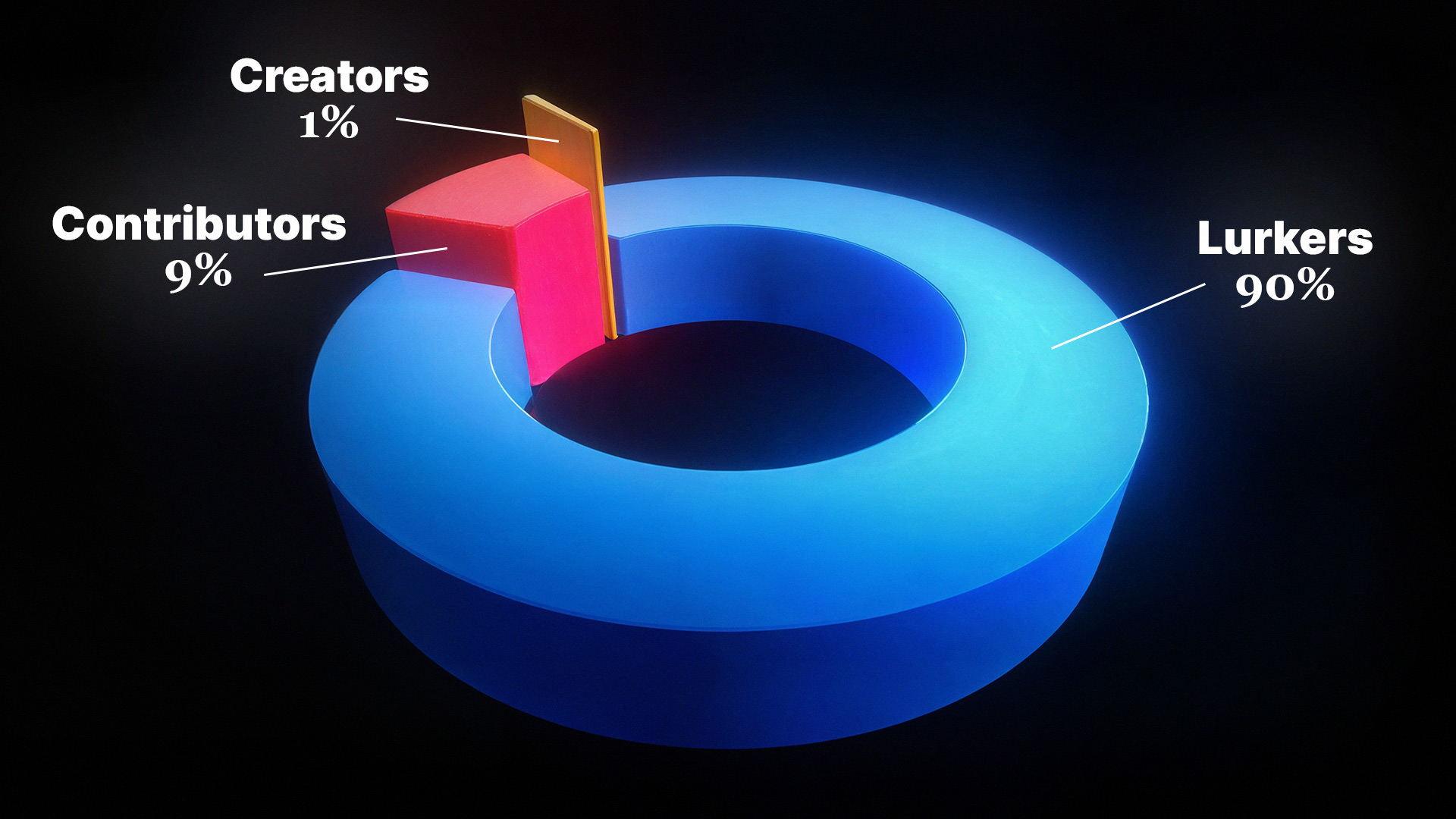The 1% Rule posits that in any given online community, 1% of the users typically create most of the content, 9% of the users contribute occasionally, and the vast majority, 90%, consume content without contributing.
Origin
The concept has its roots in observations of internet behavior patterns, emerging prominently in discussions during the early 2000s. It echoes earlier theories such as the Pareto Principle (80/20 Rule), applying it specifically to online participation and content creation.
Key Components
- Creators (1%): A small but highly active segment that generates the majority of the content and drives discussions.
- Contributors (9%): Users who participate occasionally, adding to the content and discussions initiated by the creators.
- Lurkers (90%): The silent majority who consume content without actively contributing through posts or comments.
Factors Influencing Participation
- Platform Design: The user interface and experience (UI/UX) can significantly affect how users participate.
- Community Culture: The norms and values of a community influence participation levels and the transition from lurker to contributor or creator.
- Individual Motivation: Personal interests, perceived benefits, and the desire for social interaction or recognition motivate participation.
- Psychological Aspects: Understanding the psychological drivers behind participation can provide insights into the varying levels of user engagement.
- Content Type and Quality: The relationship between the type and quality of content and its effect on user participation patterns.
Additional Considerations
- Social Dynamics and Network Effects: The impact of relationships and influential users within a community on participation patterns.
- Temporal Dynamics: How participation inequality shifts over time with the community’s evolution.
- Cultural and Demographic Influences: The effect of cultural and demographic factors on how users participate within a community.
The 1% Rule in Exclusive Communities
In exclusive communities, characterized by selective membership criteria, the distribution of participation as outlined by the 1% Rule often shifts. These communities typically see:
- Higher Engagement Levels: Members, bound by shared interests or goals, generally show a greater inclination towards engagement, potentially altering the typical 1%/9%/90% distribution.
- Focus on Quality: The value placed on the quality of contributions often surpasses that of quantity, with a community’s exclusive nature fostering a deeper investment in the relevance and impact of each contribution.
- Strengthened Community Bonds: The exclusivity factor tends to enhance the sense of belonging and mutual respect among members, encouraging a higher rate of active participation.
- Stringent Moderation: Exclusive communities may implement strict moderation policies to maintain focus and quality, affecting how members participate and interact within the community.
- Enhanced Feedback Mechanisms: The recognition and feedback from peers within such communities are highly valued, serving as strong motivators for participation.
These dynamics suggest that while the 1% Rule provides a useful general framework, the specific characteristics of exclusive communities can significantly influence participation patterns, leading to more active engagement and a possible shift in the typical distribution of creators, contributors, and lurkers.
Implications for Community Management
Recognizing this distribution is beneficial for those who design and manage online spaces, as it impacts strategies for engagement, content moderation, and community growth.





